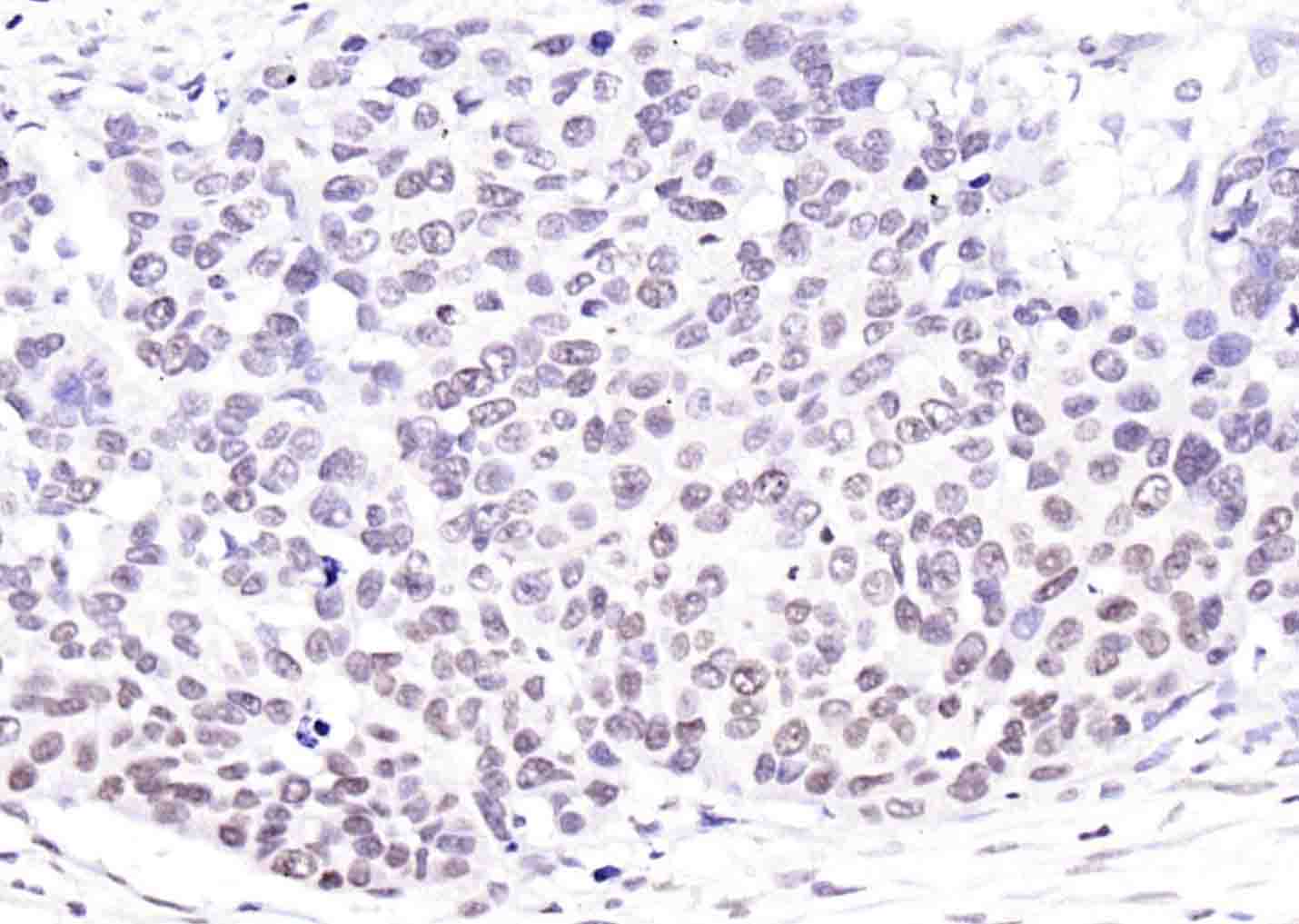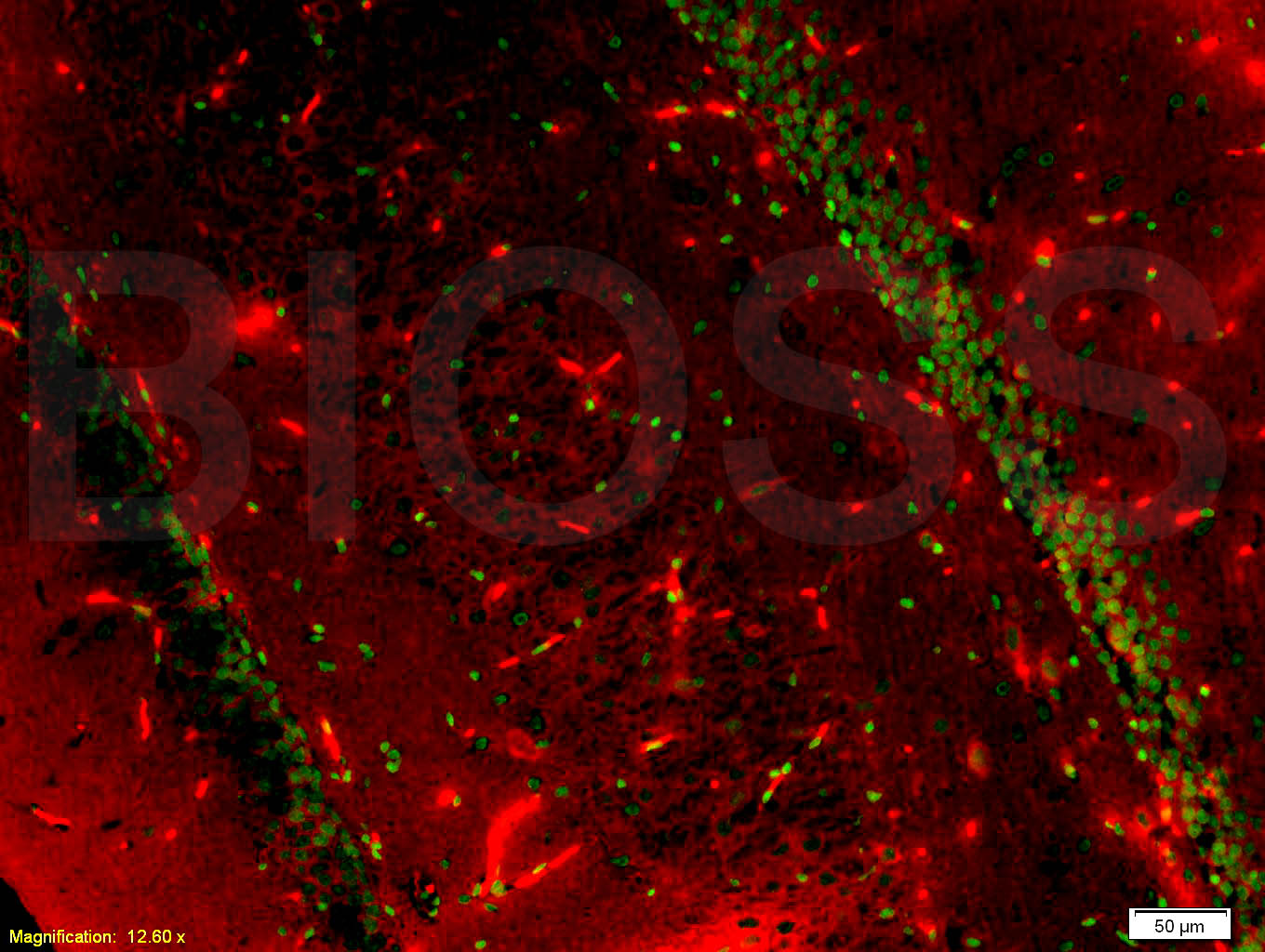sales@bioss.com.cn
techsupport@bioss.com.cn
400-901-9800
Host: Mouse
Target Protein: BrdU(Proliferation Marker)
IR: Immunogen Range:
Clonality: Monoclonal
Isotype: IgG
Entrez Gene: 59-14-3
Swiss Prot: N/A
Source: KLH conjugated Brdu:
Purification: affinity purified by Protein G
Storage: 0.01M TBS(pH7.4) with 1% BSA, 0.03% Proclin300 and 50% Glycerol. Shipped at 4℃. Store at -20 °C for one year. Avoid repeated freeze/thaw cycles.
Background:
Proliferation Marker
Bromodeoxyuridine (BrdU) is a thymidine analog and is specifically incor-porated into DNA during DNA synthesis. Anti-bromodeoxyuridine monoclonal antibody is used to identify cells that have incorporated BrdU. This immunological detection scheme has several advantages over the use of radioactive thymidine incorporation for identifying cells under-going replication. Labeling and detection can be performed the same day instead of waiting several days, as required for autoradiography of tritium-labeled cells, and the necessity of using multiple specimens for obtaining the optimal exposure time is eliminated. In addition, anti-bromodeoxyuridine staining with flow cytometric analysis allows multiple parameters to be evaluated simultaneously. Anti-bromodeoxyuridine monoclonal antibody has been used for identi-fying proliferating cells in blood (Campana et al., 1988), tissues (Schutte et al., 1987; Hayashi, et al., 1988), tumors (Hoshino et al., 1986; Morstyn et al., 1983), as well as for determining plasma cell labeling indices (Greipp et al., 1985).
Size: 50ul
Concentration: 1mg/ml
Applications: IHC-P=1:100-500,IHC-F=1:100-500,IF=1:100-500,ELISA=1:5000-10000
Cross Reactive Species: Human,Rat (predicted: BrdU)
For research use only. Not intended for diagnostic or therapeutic use.



